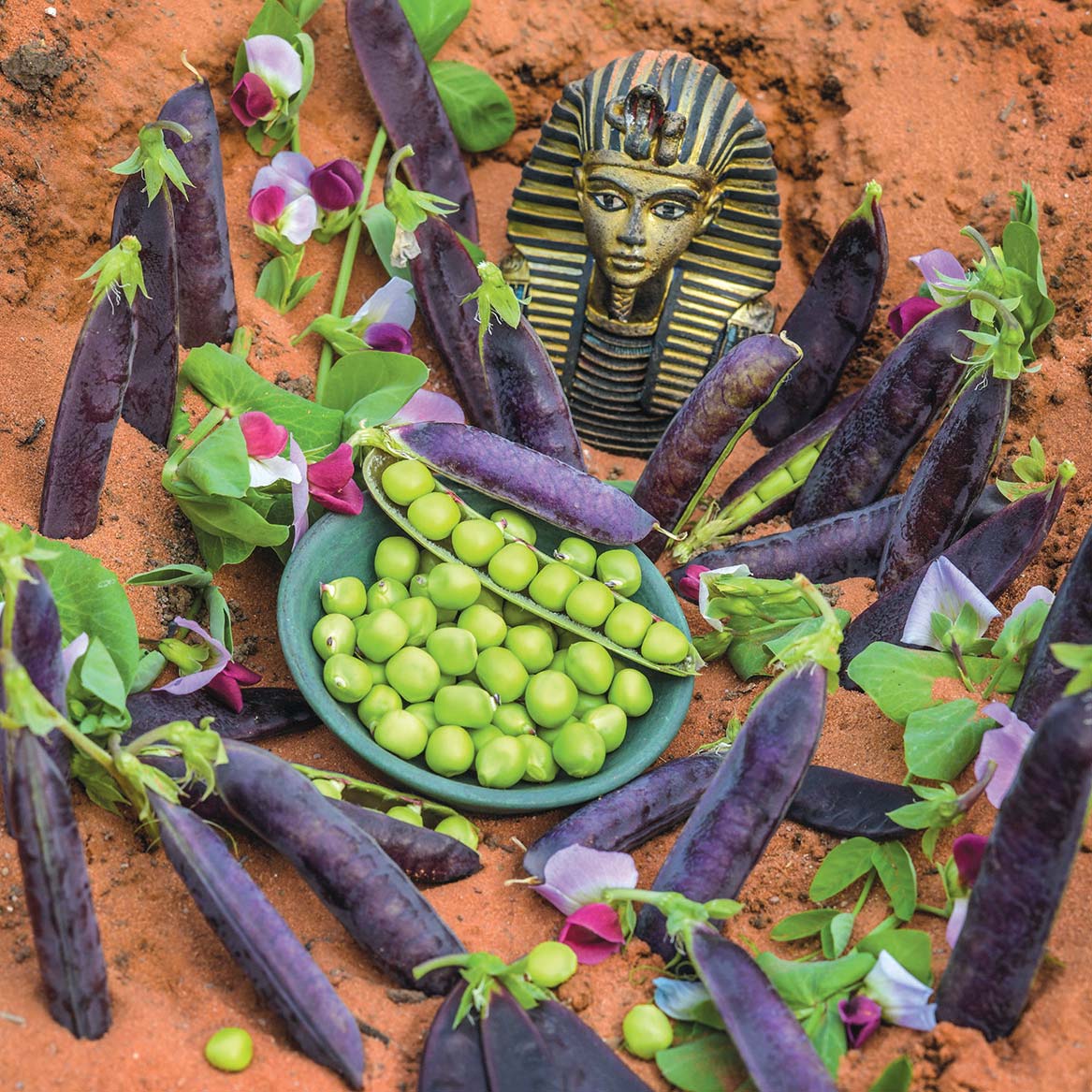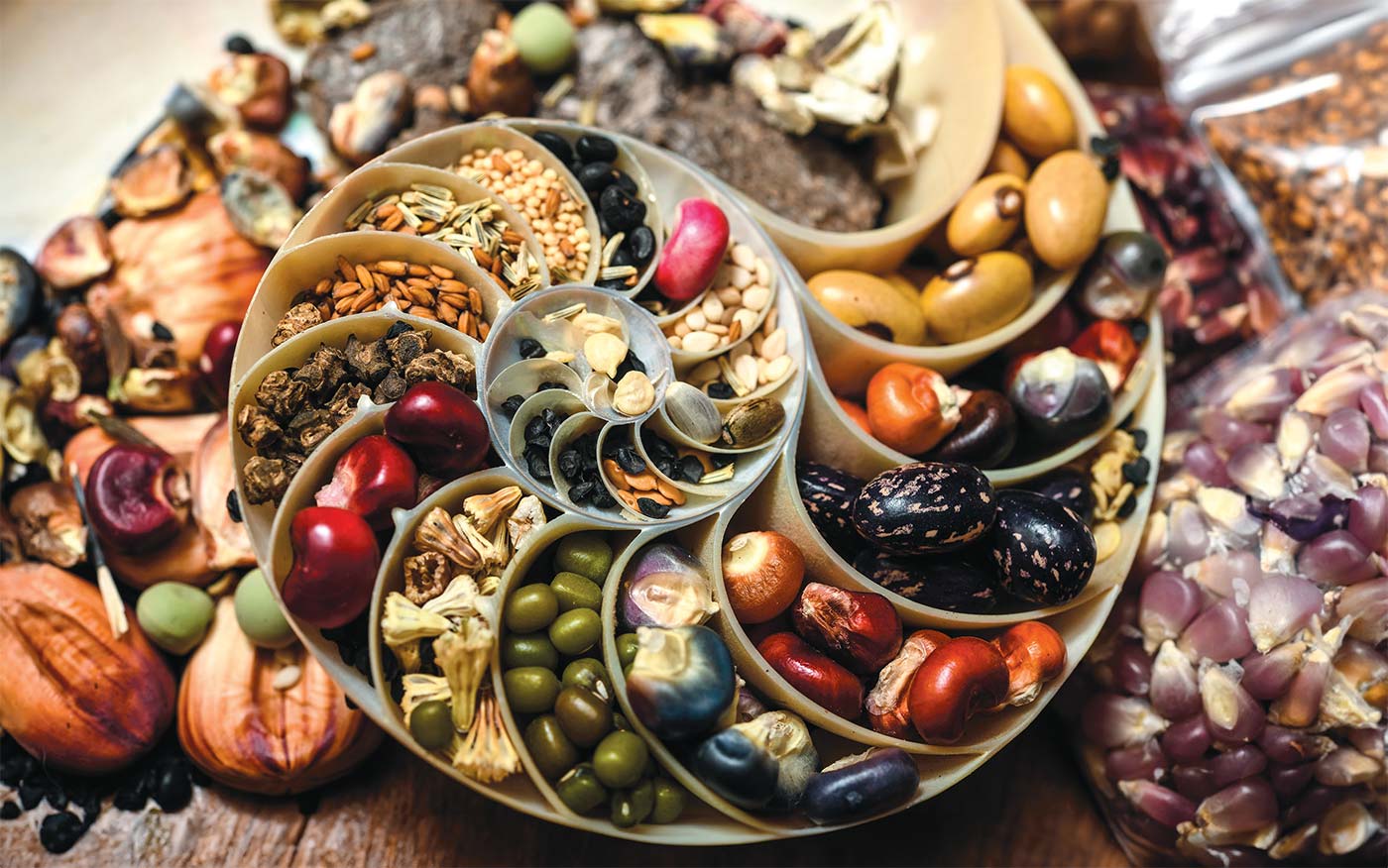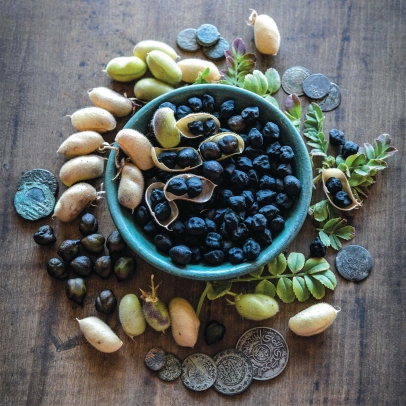Sowing the Seeds
Seeds are precious and practical, simple and complex. The plant world around us is born from these humble seeds, each carrying a blueprint for something new, while also a continuation of what has come before. Our ancestors understood the value of seeds, and in this modern world of synthetics and genetically modified versions of the past, seeds are more valuable than ever.
On a large scale, seeds are preserved in optimal conditions in seed banks to ensure future agricultural diversity. The world’s largest, located in an icy wilderness between Norway and the North Pole, holds seeds for nearly a million different crops. Yet the lowly seed is also preserved and cataloged by those who keep a collection in a rusted tin in the shed to seed their gardens and put food on the table.
Beyond their importance to the planet and the future of food, we are more likely to think of seeds in a practical sense—as a great snack, food for our chickens, the beginnings of a loaf of bread or the first step to a garden harvest. But how can we harness the power of seeds every day, potentially in new ways?
Seeds are precious and practical, simple and complex. The plant world around us is born from these humble seeds, each carrying a blueprint for something new, while also a continuation of what has come before.

The King Tut purple pea (above) is said to have been the same one found inside King Tut’s tomb and propagated successfully after its 5,000 year hibernation.
SEEDS AS A SOURCE OF NUTRIENTS
Seeds represent many things, but they are almost always associated with healthy eating. Seeds are one of the most accessible and versatile foods to meet our nutritional needs. And compared with many much-less-healthy options, they are incredibly affordable for what they provide. Locked up inside each seed is a powerhouse of nutrients that we can access by the handful, or by adding them to dishes we already enjoy.
Though every seed contains a long list of essential nutrients, standouts such as hemp (9.6g protein), chia (10g fiber), flax (6,388mg omega-3), pumpkin (168mg magnesium), sesame (4.2mg iron), poppy (409mg calcium) and sunflower (11.34mg vitamin E) provide more than 25% of the recommended daily amount of one or more of them in just one 1-ounce serving.
These and many other seeds are considered rich sources of certain nutrients, with impressive nutritional payouts that can boost your health in just a few ounces a day. And, particularly for people following plant-based diets, they can help us get the protein and fatty acids we all need.
Some seeds offer a complete protein, which means they contain all nine amino acids. Examples are chia seeds, quinoa and pumpkin and hemp seeds, which have more protein than any other seeds or nuts.
SPROUTING FOR MORE NUTRITION
Sprouting seeds opens up the carefully protected nutrients within the seed, which are meant to start the plant growth, and also breaks down the phytic acid in the seed. Phytic acid, nicknamed the “anti-nutrient,” protects the seed’s contents until conditions are right for germination but, in our gut, prevents us from accessing the vitamins and minerals in the seed and some other foods we eat.
There are two kinds of sprouting. One is soaking or “activating” the seeds in saltwater for four to 12 hours (depending on the seed). The seeds are then dried in a dehydrator or low-temperature oven. They look and taste similar to regular seeds, but the phytic acid is removed through this process.
The second type of sprouting involves soaking and rinsing the seeds over several days, keeping them moist so that they germinate and form roots. The seeds become a fresh, raw produce that is essentially a concentrated version of what would have become the fully grown plant.
Both can be made at home or purchased. The soaked and dried seeds are labeled “sprouted seeds” and are found among the other seeds and nuts, while the sprouts are sold with the refrigerated produce

BAKE BETTER WITH SOURDOUGH AND SPROUTED FLOUR
All grains that are milled for flour, such as wheat, are seeds, again full of nutrition, but also phytic acid, which remains in the flour. As with seeds in general, our bodies are able to digest and gain more nutrition from grains when either the seeds or flour are soaked or sprouted.
Using a sourdough starter in doughs made with wheat flour reduces the phytic acid in the milled flour, similar to soaking whole seeds, and also breaks down its gluten to make the final product more digestible. The sourdough process also adds a depth of flavor to breads and other baked goods and makes them more satisfying to eat.
Sprouted flour, because the grain seeds are soaked and sprouted first, then dried and milled into flour, results in equally delicious, nutritious and easy-to-digest baked goods. You can make your own sprouted flour at home or purchase it (in wheat, spelt, einkorn and more) and have it on hand to bake with less waiting and planning ahead than sourdough. For more on sourdough, click this QR code.
SAVE SEEDS FROM THE GARDEN
Seeds fulfill their primary purpose by growing into plants, and to gardeners they hold the promise of a fruitful harvest. Starting plants from seeds, either inside or directly in the ground, is the most economical way to build a garden.
You can purchase seeds in nearly any variety, but saving your own at the end of the season is more economical than buying seedlings or starts and allows you to build your own seed bank over time, and improve your garden by being selective in the seeds you keep.
Let at least one plant of each variety flower and go to seed at the end of the season, then collect its seeds. You can also save seeds from inside fruits and vegetables grown in the garden and dry them on paper towels near a window. Tomato seeds need to be soaked in water for a few days first to remove a gelatinous coating.
For the best results, seeds should stay on the spent plant for as long as possible to completely dry out. Also, take the time to research each variety so you will know what the seeds should look like and choose only to save the best.

For thousands of years, the Hopi People have used Hopi Black Dye sunflower seeds to make traditional dyes used in their basketry and wool fabrics.
BORROW FROM A SEED LIBRARY
Seed libraries are a fun way to share your seeds and “borrow” new varieties. Many libraries and other organizations across the county host these spaces where you can take a packet of seeds, plant them in your garden, collect seeds from them, and return them for someone else to use.
It may seem like a new concept, but seed libraries are making a comeback after a wave of amendments to state food and agricultural codes that now allow for non-commercial seed sharing.
These laws were meant to protect commercial seed producers, but also made exchanges like seed libraries illegal. California was the fourth state to make the change in 2016 and hundreds of seed libraries have sprouted up in the state since. To learn more about seed libraries, check out our resources..
SUPPLEMENT FEED WITH SEEDS AND GREENS
If you have backyard chickens or livestock, you can bring all these concepts together in one project. Plants that grow well in the garden and also produce a lot of seeds—such as amaranth, sunflower, corn and pumpkin—provide a source for seeds that you can dry and store to supplement feed.
Take it a step further by sprouting seeds such as wheat, barley and oats into fodder, to provide greens for animals in the off season, or if they do not forage. The seeds are soaked, drained and watered in trays for a week or more until they produce a carpet of greens that can weigh up to seven times the original seeds. Just another extraordinary feat for the humble seed.
RESOURCES
Seed savers are a passionate lot who love to share resources, seeds and strategies. Click here for a wealth of resources to help you along in your seed-saving journey.





